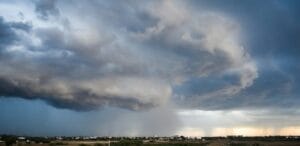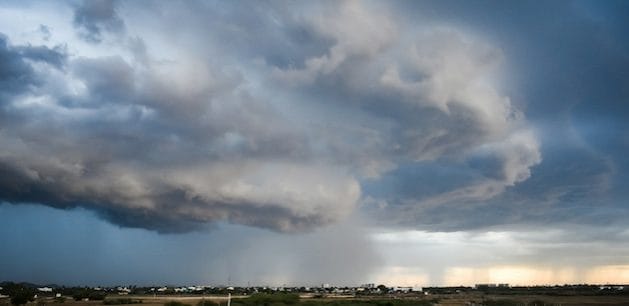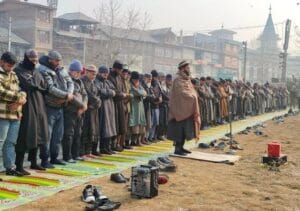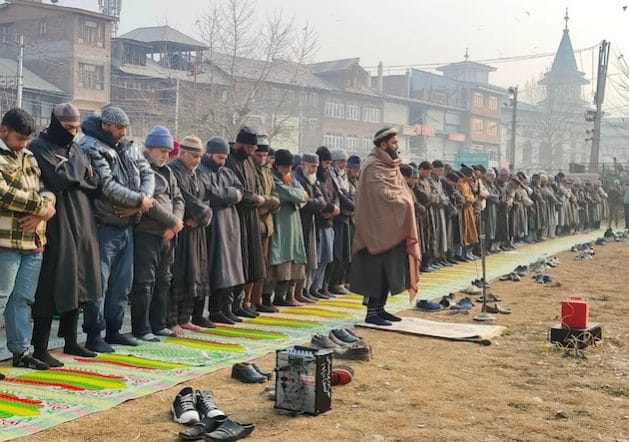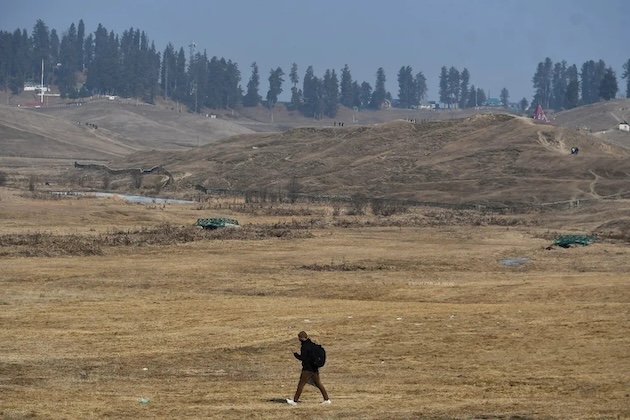
Asia-Pacific, Climate Change, Conferences, COP29, Economy & Trade, Editors’ Choice, Environment, Featured, Headlines, Sustainable Development Goals, TerraViva United Nations

Wind turbines overlooking Vyas Chhatri, traditional architecture of Jasalmer district in Rajasthan. Credit: Athar Parvaiz/IPS
– While India continues to rely heavily on coal, the south Asian economic giant is also aggressively pushing renewable energy production, especially after the costs of renewable energy production have fallen drastically in recent years around the world.
But experts say that India—the world’s third largest emitter of greenhouse gases (GHGs)—has to face many headwinds for achieving its net zero target by 2070 and before that, reaching the target of a 45 percent reduction in GHG emission intensity by 2030 from 2005 levels.
According to the experts, addressing the gaps in policies and strategies are some of the main measures India needs to take for a rapid transition to renewable energy sources. But most of them believe phasing out fossil fuels such as coal appears to be a daunting task for India given its huge reliance on them. India ratified the Paris Agreement on Climate Change in 2016, committing to limit the global average temperature rise to below 2°C by the end of the century.
As part of its first Nationally Determined Contributions (NDCs), India had pledged to reduce the greenhouse gas (GHG) emission intensity of its economy by 33–35 percent by 2030 from 2005 levels. In August 2022, the Indian government revised its NDCs, raising its ambition to a 45% reduction in GHG emission intensity by 2030 from 2005 levels.
The south Asian country has also pledged to become carbon-neutral or achieve net zero carbon emissions by 2070, an announcement made by the Indian government in 2021 during CoP 26 in UK. According to the UN Climate Change Executive Secretary, Simon Stiell, Decarbonisation is the biggest transformation of the global economy of this century.
Coal to Stay ‘For India’s Development’
Presently, the contribution of coal for India’s energy generation is 72 percent and accounts for 65 percent of its fossil fuel CO2 emissions. The contribution of coal for energy generation in India, say the experts, is not going to change anytime soon.
“Coal cannot be removed from India’s energy mix in the next 20 years. We require coal because we need a development-led transition, not a transition-led development,” said Amit Garg, a professor at Indian Institute of Management (IIM), Ahmedabad-Gujarat. “We can adopt new technologies and try new ways, but we in India cannot eradicate coal just yet.”
Anjan Kumar Sinha, an energy expert who is the technical director of Intertek, told IPS that energy security in India is currently dependent on coal and would take time for its phasing out given how the country is yet to be ready for a rapid phase-out of coal, which is currently extremely important for India’s energy security.
“In phasing it out, we have to improve flexible operations of coal-based plants for electricity dispatch, especially with increasing levels of renewable energy,” he said.
According to Sinha, coal being an important energy resource which India has, “we need to wash its sins” with a continuous increase in production of renewables. India, Sinha said, “has to save itself… it can’t leave it to the rest of the world.”
India has been hailed for the progress the country has achieved in its clean energy transition in recent years. The Indian government aims to increase non-fossil fuel capacity to 500 GW and source 50 percent of its energy from renewables by 2030.
“[This] progress seems encouraging on several fronts. Today, India stands fourth globally in total renewable capacity, demonstrating a 400 percent growth over the last decade,” notes an article published by researchers of the Bharti Institute of Public Policy at the Indian School of Business.
But, despite this progress, the authors say that India faces a lot of challenges as it still remains heavily reliant on fossil fuels.
India’s Growth and Green Journey
With India’s economy expected to expand rapidly in the coming years, there will be an increase in demand for resources, and the environmental footprints will also increase. According to the latest World Energy Outlook report of the International Energy Agency (IEA), India’s energy consumption will increase by 30 percent by 2030 and 90 percent by 2050, with carbon emissions from energy use rising by 32 percent and 72 percent in the same period.
If successful in meeting its climate commitments over the next seven years, India could offer a developmental model wherein a country continues to grow and prosper without significantly increasing its energy or carbon footprint. But the path ahead for India’s energy transition is full of significant challenges.
“This is one of the most challenging times for India. We have the challenge of growth, jobs and energy consumption, which we have to balance with environmental considerations,” B V R Subrahmanyam, the CEO of NITI Ayog, India’s top official think tank, was quoted as saying by India’s national daily, The Times of India, on September 11, 2024.
But he has emphasized that fossil fuels will continue to drive the country’s growth. “It is no longer about growth or sustainability, but growth and sustainability,” he was quoted as saying.
Experts also believe that there are hurdles along the road as the country seeks to phase out polluting energy sources.
According to this article published in Outlook magazine on October 30, uncertainties such as low renewable energy (RE) investments in recent years, land availability, high intermittency of renewables, higher costs of panels due to import duties and distribution companies that are tied up in long-term power purchase agreement (PPA) not buying new RE power are some of the major concerns.
“While there has been progress on deployment of electric vehicles in the country, upfront costs and a lack of reliable charging infrastructure pose challenges in scaling up the initiatives… for the industrial sector, fossilized manufacturing capacities will create decarbonisation challenges,” the article says.
Raghav Pachouri, associate director, Low Carbon Pathways and Modelling, Vasudha Foundation, highlighted how storage can play an important role in making energy transition successful.
“The success of the energy transition to renewable energy lies with the integration of storage. Current capacities are limited, and the quantum of requirements is huge.”
Moreover, Pachouri says, infrastructure for electric vehicles remains inadequate, with fewer than 2,000 public charging stations as of 2023.
IPS UN Bureau Report















